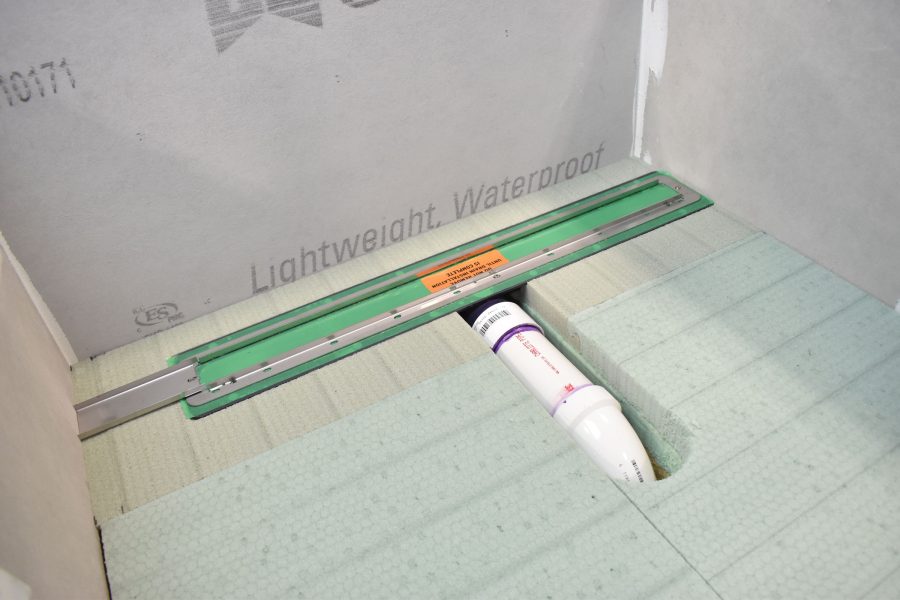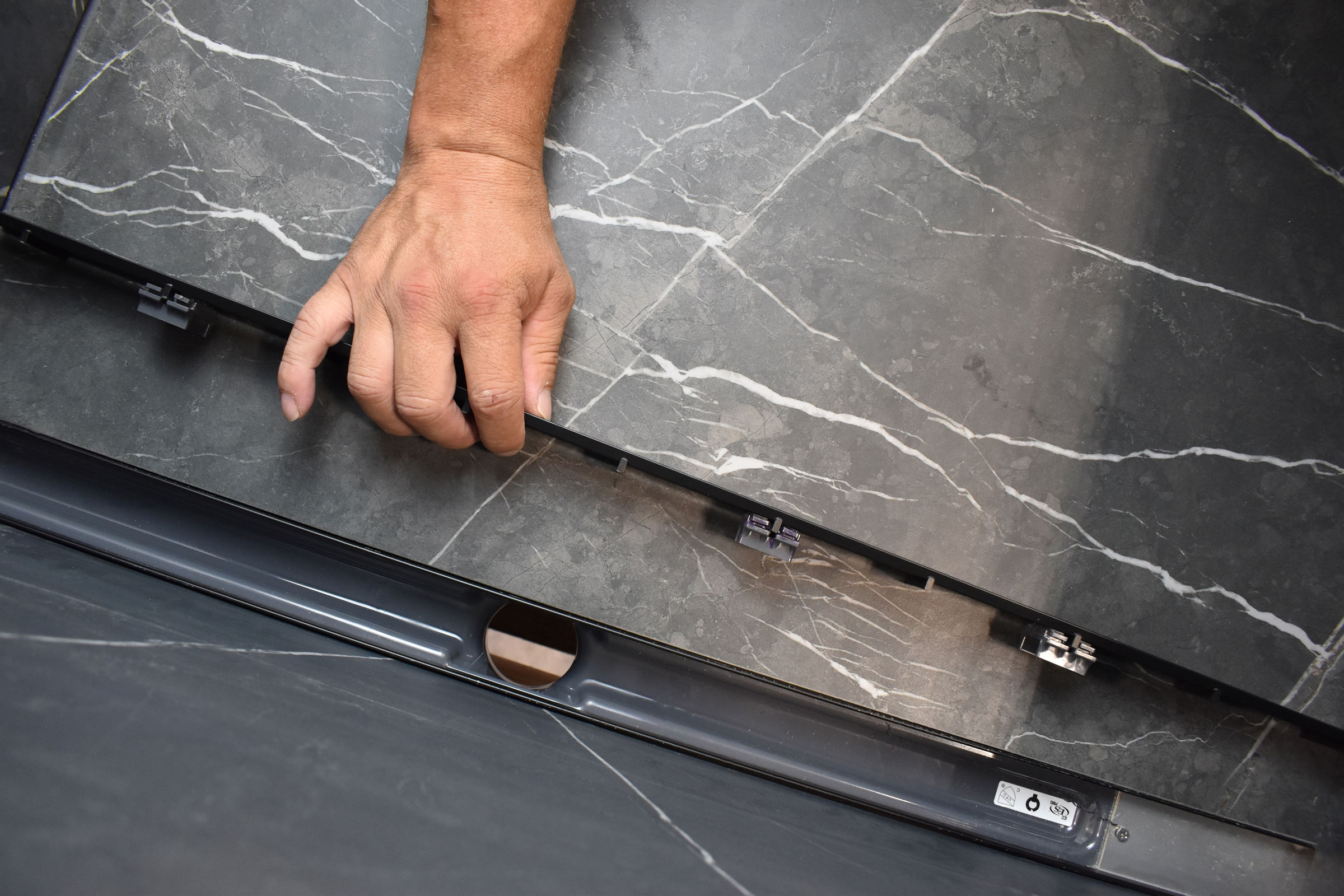Story at a glance:
- The experts at Oatey share tips to boost sustainability in projects.
- These retrofit strategies help, from coordinating logistics to choosing the right products.
Retrofitting older buildings with modern plumbing systems can significantly reduce environmental impact and improve efficiency. The benefits are clear, but tackling these upgrades, especially in aged structures, comes with unique challenges.
Fortunately advancements in plumbing technology make it possible to install more efficient systems without compromising the building’s structural integrity or disrupting occupants.
Here’s how to navigate retrofitting for sustainability, from coordinating logistics to choosing the right products.
Challenges of Retrofitting Older Plumbing Systems
These are some of the common challenges when it comes to retrofitting older plumbing systems in buildings.
Surprises Behind the Walls
When retrofitting you’re working within the framework of the existing structure. One of the biggest challenges is the unknown behind the walls. You don’t know what the structure’s guts look like until you’re in there. You might encounter older wiring, unusual stud placements, or even materials like lath and plaster, all of which make routing new plumbing lines trickier. This unpredictability can impact time and budget, and planning can be challenging.
Coordinating with Occupants
Working around occupants in residential and commercial buildings can add another layer of complexity. Shutting off water for any significant time can be disruptive, so retrofitting teams often have to coordinate carefully, notify occupants, and sometimes work off-hours.
Navigating Structural Obstacles
Older buildings may be overbuilt or designed with structural nuances that were standard at the time. This may mean post-tensioned slabs (rebar), extra studs, thicker walls, or unconventional plumbing routes. In some cases you’re dealing with things like solid brick walls or odd layouts, making getting the new plumbing system into place much more complex.
5 Modern Plumbing Technologies with Environmental Benefits

Photo courtesy of Oatey
One way to increase time efficiency while navigating these challenges is to opt for flexible, onsite-customizable plumbing systems. Taking a system approach versus a component approach is a great way to save time, enabling you to complete retrofitting jobs faster.
Whether you’re repiping, converting a tub to a shower, working on plumbing rough-ins for new bathtubs, installing freestanding tubs, or updating supply lines, onsite-customizable or universal plumbing products offer time savings and job-site efficiency.
1. Solvent cements for faster, less disruptive installation
For DWV piping projects requiring quick installation, Oatey’s line of solvent cements provides a “hot cement” solution that cures faster and can bond in damp conditions. This is especially helpful for retrofitting apartments or hotels where minimizing water shutdowns is a priority.
Using these faster-curing products can mean having water down for only four hours instead of eight. That’s huge for anyone managing residential properties.
This solvent cement is low-VOC, high-performance, and meets California South Coast Air Quality Management Districts (SCAQMD) 1168/316A or BAAQMD Method 40 requirements.
It also meets ASTM Standard D2564 and complies with NSF/ANSI 61 health effects requirements.
2. Efficient shower drain systems

Photo courtesy of Oatey
Oatey ShowerLine Linear Drain Systems simplifies bathroom retrofits by facilitating the conversion of tubs to showers or upgrading existing showers with efficient drainage solutions. Their adaptable designs allow contractors to work within existing layouts without extensive demolition, making low-impact installation feasible.
Commercial building contractors frequently face challenges when converting bathtubs. Job-site conditions often differ from construction plans, leading to unexpected plumbing configurations. While pre-formed shower bases are a common choice, they may not always suit unique site conditions.
ShowerLine Installation Kits feature customizable components that accommodate various shower enclosure sizes and unexpected plumbing setups. The provided PET shower pan is site-sizeable with a utility knife for easy modification and flexibility. Compared with a traditional mortar bed, it reduces installation time by two days and is ready to leak-test in as little as two to three hours. This shower pan is also made of extruded rigid PET from 100%-post-consumer-recycled content, is fully recyclable, and can make an installation eligible for LEED certification points.
When removing older tubs, drains are often misaligned or off-center, making traditional adjustments, like jack-hammering or core-drilling, impractical, especially in multi-story buildings with post-tensioned slabs.
To address off-center drain issues, Oatey ShowerLine’s site-sizable linear drain body offers a flexible solution that adapts to existing drain locations, streamlining the renovation process. By overcoming these challenges, contractors can significantly expedite bathroom renovations
3. Flexible bath waste and overflow systems
Compact, flexible products can make installing bath systems in older buildings more manageable. Oatey’s True Blue Flex Bath Waste Kit is designed for tight spaces, so it’s ideal for older structures where space behind the walls is limited.
The kit has flexible and adjustable tubing that is an alternative to rigid PVC, making it easier to overcome residential and commercial job-site obstructions such as floor joists, misaligned/offset drains, and severely sloped walls.
Furthermore, this kit requires no additional tools, helping installers avoid a common job-site challenge involving the installation of overflow covers. Traditionally, installers must attach the overflow (on the tub side) using screws and a brass yoke. This kit allows a simple clockwise turn for overflow cover installation, eliminating that step.
4. Universal supply boxes for streamlined installations
MODA Supply Boxes offer a sleek solution for gaining extra space by recessing valves into the wall, minimizing the footprint of exposed plumbing. This is particularly beneficial in older, smaller areas where even a few inches can impact functionality. Integrating these boxes within the wall creates a clean, modern aesthetic without extensive reconfiguration.
A universal single-box supply box enhances versatility and simplifies installation. The modular design allows for flexible configurations, enabling positioning that straddles studs or accommodates separate walls. MODA provides options for a variety of applications, including washing machines, ice makers, toilets, and dishwashers. It is available in both standard and fire-rated formats.
Installation is straightforward, utilizing interlocking wing flanges for various setups—on-stud, straddle-stud, or multiple boxes. The snap-locking system ensures strength while permitting easy disassembly and reconfiguration.
In typical plumbing scenarios for lavatories and sinks, rough-ins are capped before connecting fixtures. However, with a MODA supply box, you can directly install the box along with the compression valve, bypassing the copper stub-out step. According to professional plumbing contractor Mike Corsillo, this could save 15 to 20 minutes per supply box, leading to significant time and cost savings over a commercial project.
For multi-story commercial buildings, MODA simplifies material use and reduces waste. “The MODA Supply Box is a single unit that eliminates components and simplifies installation, aligning with our goal to streamline materials,” Corsillo says.
5. Universal freestanding tub drains

Photo courtesy of Oatey
The demand for freestanding tubs has increased in recent years. This version of the bathtub is becoming one of the most desired fixtures for all types of bath décors. However, ask any plumber how they feel about installing a freestanding tub, and they will likely share multiple job-site frustrations involving the installation of the drain.
A universal freestanding tub drain is the most convenient way to install freestanding tubs. It removes guesswork and complexity while making this trend more accessible to home and commercial building owners.
Specifically, this innovation offers an easier and faster way to install freestanding, island center, and offset tubs by eliminating the stub-out method. It also dispenses with the need to access the drain through the ceiling of the floor below, which is terribly disruptive for both residential and commercial spaces.
Its compact size lets the drain fit inside 8-inch, 10-inch, and 12-inch joists. It can also be installed inside a 4-inch hole saw opening, making it great for remodels.
From a design perspective, a universal freestanding tub drain allows flexibility in tub location. Its compact size allows it to fit more easily between floor joists.
It is also less costly to install since access from the ceiling below is not needed. This advantage allows installers to invest more dollars in other design elements.
Tips for a Smoother Retrofit Experience
Here are three more tips for a smoother retrofit experience.
Plan for off-hours work
For buildings with residents or active businesses, scheduling off-hours work or coordinating phased water shutoffs can make retrofits less disruptive. In some cases, this may mean night work or finding innovative ways to do partial shutdowns.
Emphasize pre-planning and structural assessment
Before any installation begins, it is wise to assess the existing structure to identify potential challenges, especially if walls or floors need to be opened up. While unforeseen obstacles are inevitable, detailed planning minimizes surprises and keeps the project timeline on track.
Prioritize long-term efficiency over short-term gains
Sustainability is not just about choosing eco-friendly fixtures; it’s also about creating a system that will perform efficiently over decades. By selecting durable materials, low-maintenance fixtures, and adaptable systems, you can reduce the need for future upgrades, making your retrofit a true long-term investment.
What’s Next?
Retrofitting older buildings offers a unique opportunity to blend the charm of historic architecture with the efficiency of modern plumbing. Whether you’re a contractor, architect, or building manager, investing in sustainable upgrades reduces environmental impact, adds value to the property, and ensures it meets modern standards.
Start by assessing the current plumbing system and identifying areas where newer, eco-friendly technologies can have the greatest impact.

